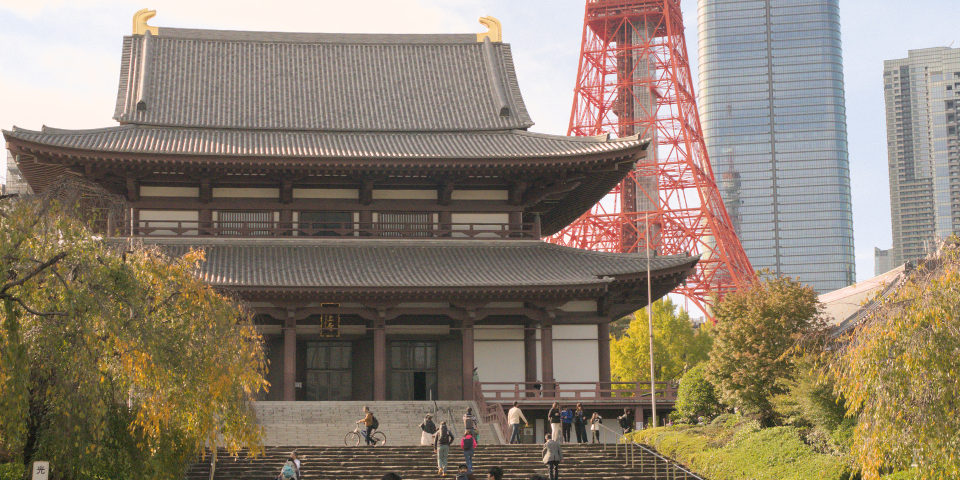
2025 November Japan Trip - Week 1 Part 1
Tokyo Week 1
So, this week was primarily about three things:
- Spending more time in places I briefly visited in January 2024.
- Do more cultural exploration compared to that previous trip.
- Hang out with my grandma!
In my previous trip, I was starting off badly - an overnight flight plus the beginning of life without energy drinks (and no, coffee doesn’t help me). I could barely process what was around me last time. I had 5 or 6 days in Tokyo last year. It didn’t feel like enough!
But this time?
Good flight in, good energy management, and best of all: more time.
I can enjoy so much more of Japan this time around!
Shrines Near The Hotel
My first full day in Tokyo was spent exploring Minato City.
The priority was to get started on my goshuin-cho - a book that stores the marks of each temple or shrine that you visit. We’re meant to start a new goshuin-cho when we do a new trip - they represent a pilgrimage, after all!
To do that, I had to find a temple or shrine that was selling not just a goshuin but also a goshuin-cho. With how small and niche some of these shrines are, the goshuin-cho being available is not a guarantee.
Buuuuuuuuuuuuuuuuut this wasn’t even a hassle. The nearest full-size temple to me sold goshuin-cho. This was Shiba Daijingū.
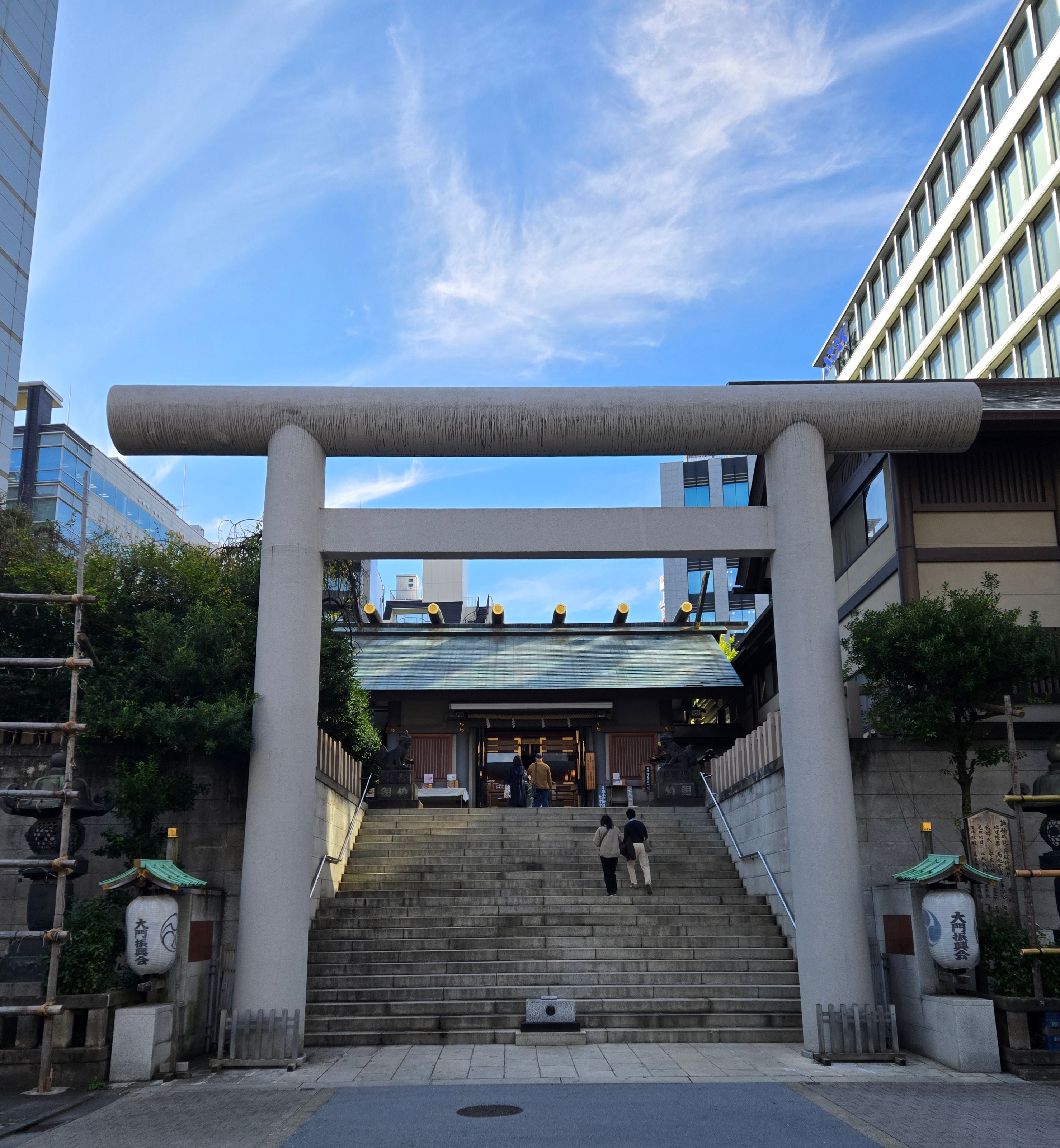
This temple was built in 1005, and is dedicated to (or “enshrines”) two deities:
- Amaterasu, the most high-tier deity of Shinto and the deity of the sun.
- Toyouke, a deity of food, agriculture, industry, clothing, and housing.
When visiting these shrines or temples, you go and do your part to learn about the place and its purpose - and then you go and make an offering, pray, or both. There’s some more to it than that in some places, such as washing your hands and mouth, or washing your money, or inscribing prayers or desires on to wooden talismans or charms, or burning incense, or… you get the gist. This stuff can be complex, deep, and varies per place.
For me, I go to learn about the mythologies and see local craftmanship - what are the deities in the spotlight here? What are the local stories about those deities? Does this location have its own histories or stories? What awesome local art is used on the marks of pilgrimage today?
Fun fact: a lot of that stuff is also what you would see and learn about when visiting near-and-dear Australian Aboriginal locations of importance, like the Glasshouse Mountains in Queensland. There are many, many parallels between Japanese Shinto and Australian Aboriginal Dreamtime - I wish we had more of this stuff in Australia!
So, the goshuin-cho. It’s a book you use to store your proof of pilgrimage from each temple, shrine, etc, that you visit - and you use a new book for each new pilgrimage. Different locations offer different designs or artwork on their goshuin-chos, turning them into a sort of unique proof of pilgrimage themselves. Here’s what I got from Shiba Daijingu on the 4th of November 2025 (yes, noting the dates of what is on offer matters for hardcore collectors out there):
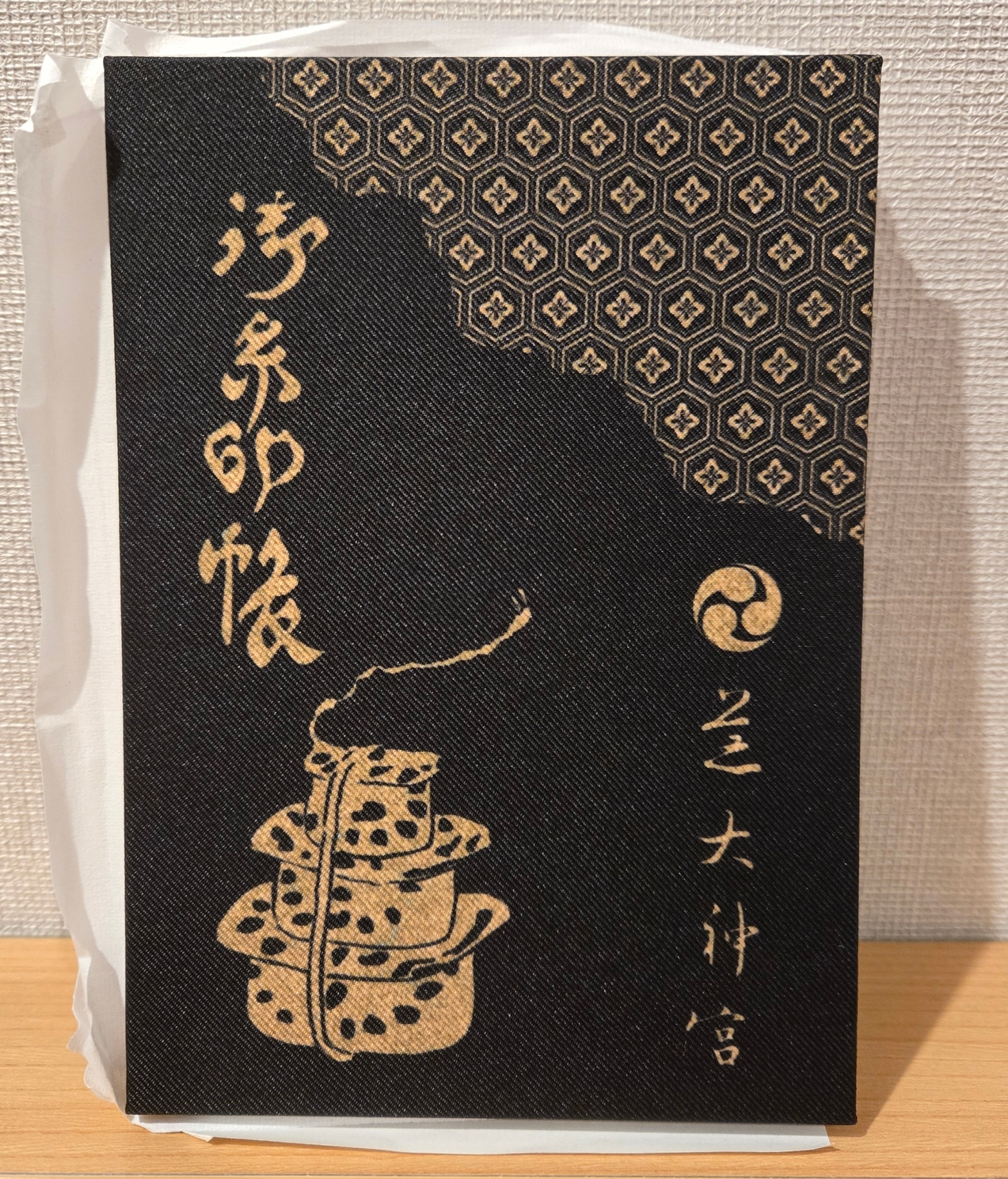
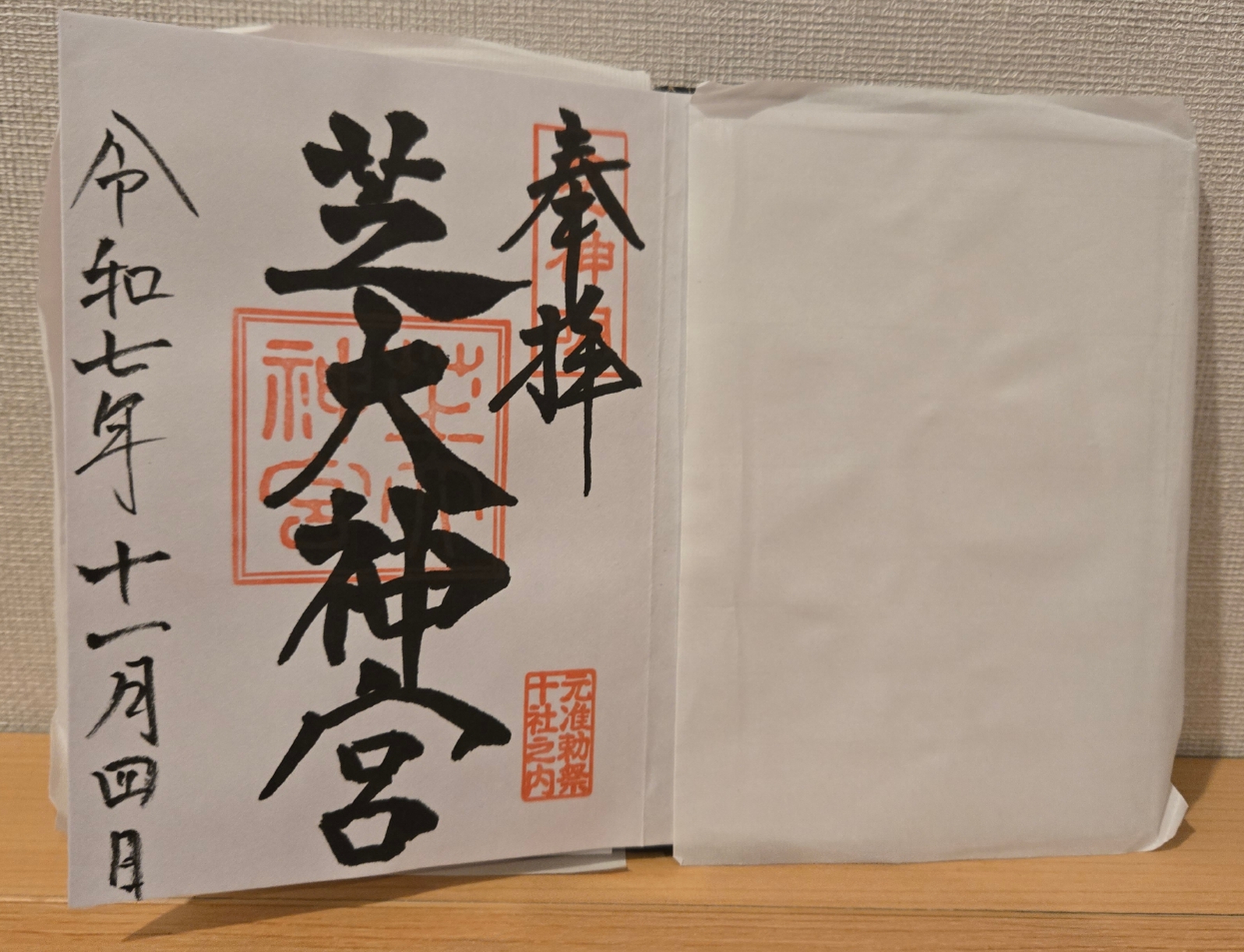
When purchasing your goshuin-cho, the place you’re purchasing from will typically put the goshuin of that place into the book as well. The book has thick paper set to open like an accordion - you can use each page double-sided if you want to, though I probably won’t. These books get crowded quick with the goshuins and their protective paper!
The goshuin itself - at least for Shiba Daijingu - was a hand-calligraphied page with red stamps on it. The calligraphy ink is fresh, so the goshuin comes with a piece of paper to protect the ink from smudging on to other pages and wrecking other goshuins!
A goshuin contains a few bits of information as part of its purpose as a proof of pilgrimage: it contains the name of the temple or shrine that you visited, the date that you visited on, and a phrase of worship from that temple or shrine. Goshuins can also contain additional metadata, like a design or seal that represents the place itself (typically the red stamp behind the black calligraphy title of the place on the middle of the page) and anything else that the temple or shrine wants to convey, like names of deities enshrined at that location (as smaller red stamps).
The goshuin you saw above is the most-standard, typical, normal goshuin. It’s a good proof of passage.
But when a location offers something more customised and artistic, I’ll jump on that!
On the way back from Shiba Daijingu, I was checking my map and saw another shrine nearby. Literally around the corner from Shiba Daijingu, and tucked away into the ground floor of an apartment building: Tokyobutsuganji. Read that as “Tokyo-bootsu-gahn-jee”.
Tokyobutsuganji has a reputation for being all about merch, such as extravagant goshuins and a wide variety of religious charms or tokens. I’m a tourist on a holiday, I’m a sucker for that stuff.
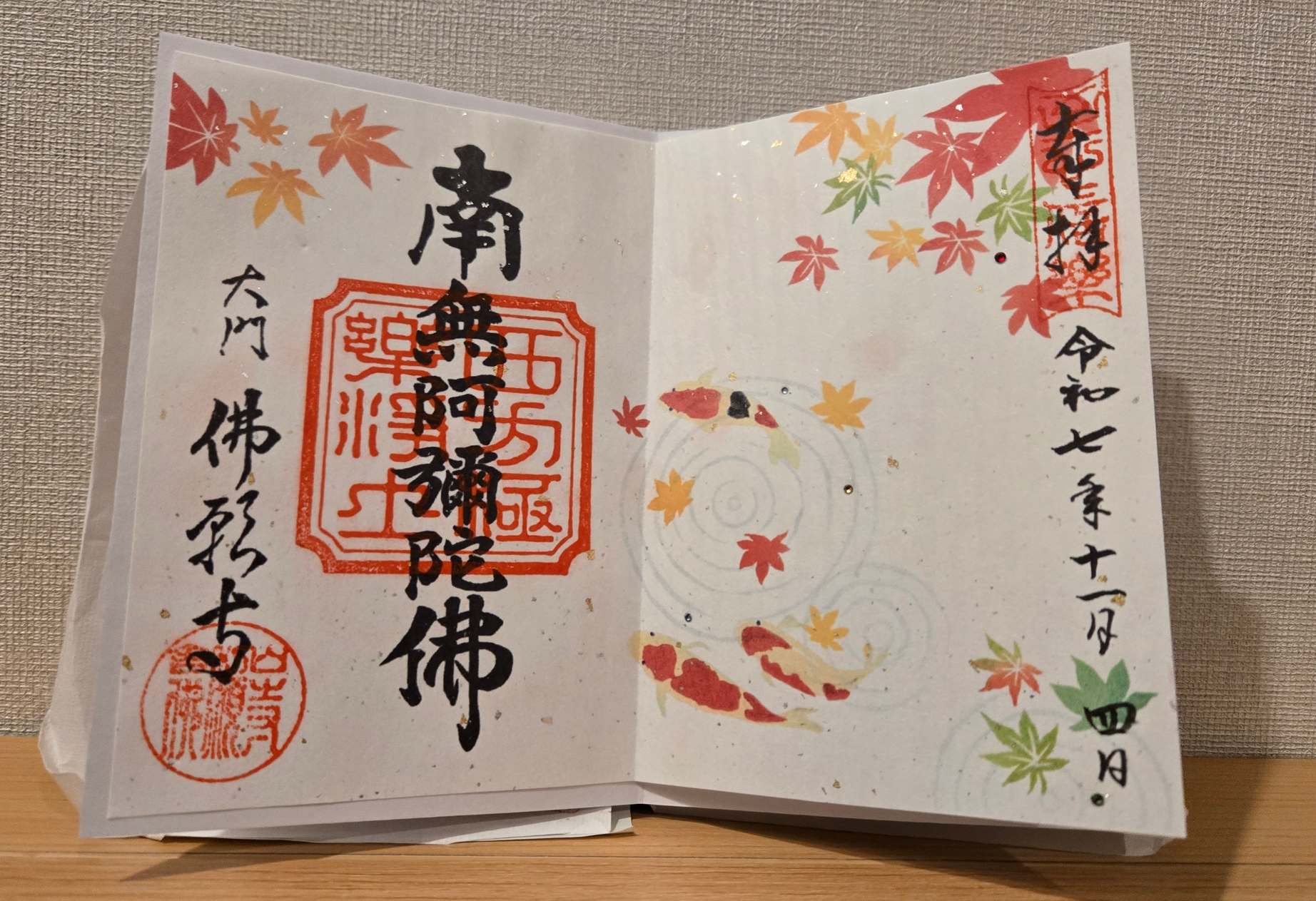
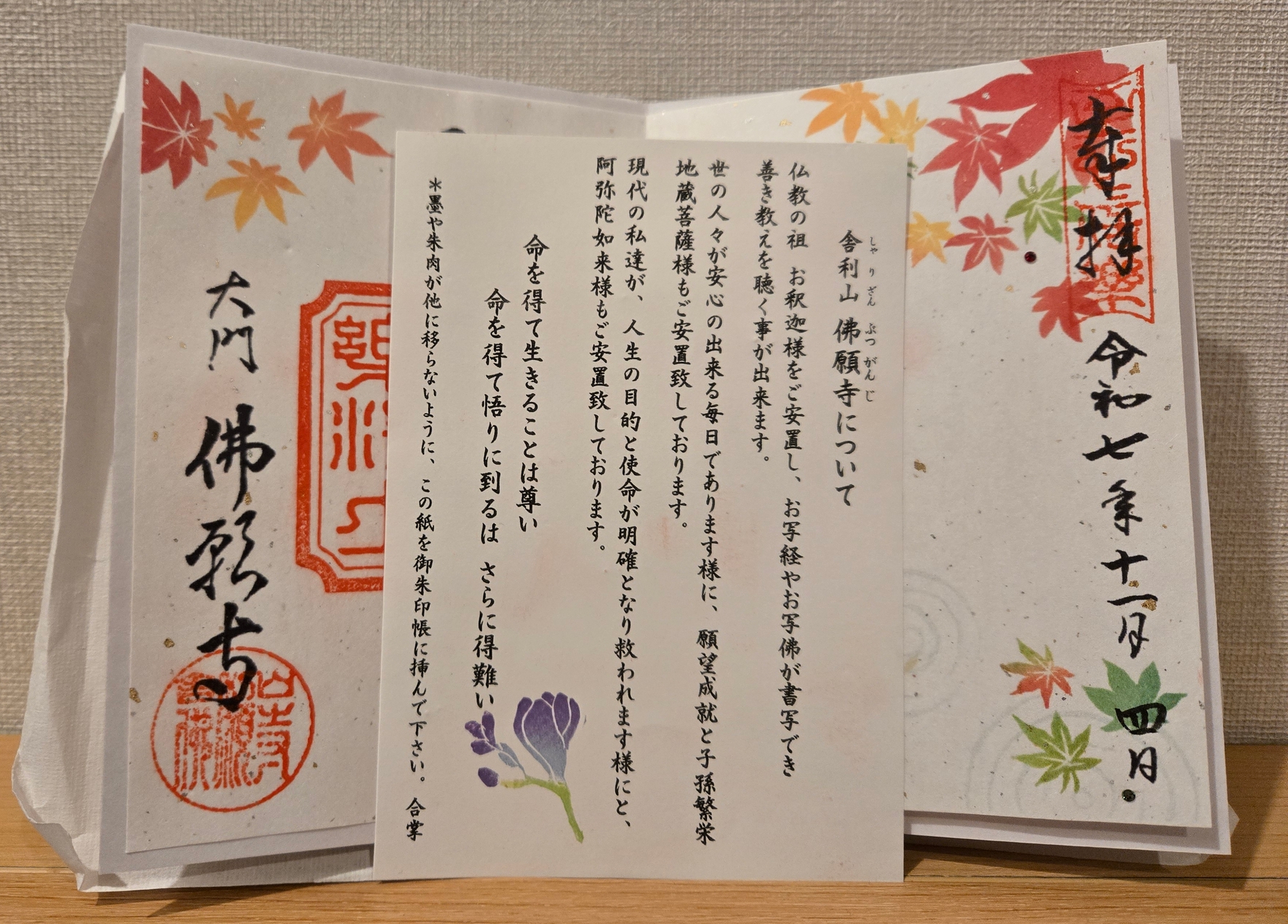
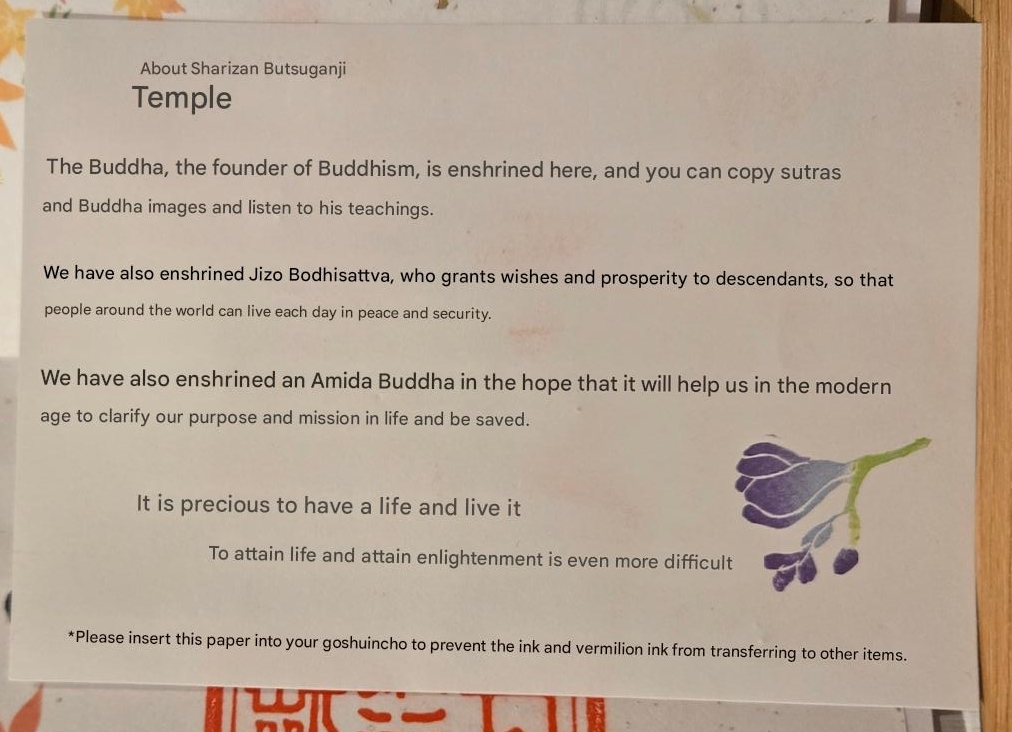
As you can see from the lore handout / ink protector paper, Tokyobutsuganji is a place to worship multiple deities with the goal of providing prosperity, clarity, and good fortune in your life.
Real pretty goshuin, real nice mythology. Didn’t feel right to take photos of the place itself though - as said, it’s the ground floor of an apartment building and looks very much like someone lives there.
In Shinto customs, people can and do have a deity enshrined in or worshipped from their home, backyard, or other place that they manage. A shrine making that available to the public is kinda nice, in my eyes.
With the goshuin-cho acquired and two goshuins already set, it was time to go explore a larger temple nearby!
Shiba Park and Zojo-ji Temple
When I booked my hotel, I didn’t plan on being right near a major temple. This was a very happy accident!
Shiba Park a nice sector of greenery amongst Tokyo’s built-up metro surroundings. Within the park are a couple of areas to chill, sit down, eat your food, and continue on with your day.
Aaaaaaaaaaaaaaand there’s Zojo-ji Temple, a huge complex densely packed with religious and cultural sites of importance.

Markers 5 through 17 in the above image are just about Zojo-ji Temple! There’s a lot of stuff there!
The current site of Zojo-ji was established in 1598, as part of the Tokogawa Shogunate moving to Edo (ancient Tokyo). It was a grand, main temple site for “Jodo-shu” Buddhism of that era - and declined in size as the Edo period was replaced by the Meiji Period. The Meiji Period had a strong anti-Buddhism movement, apparently. These days, the site is well-looked after and bustling.
Part of the site was undergoing rennovations when I visited - the entrance gate on the south-eastern side of the site was covered up.
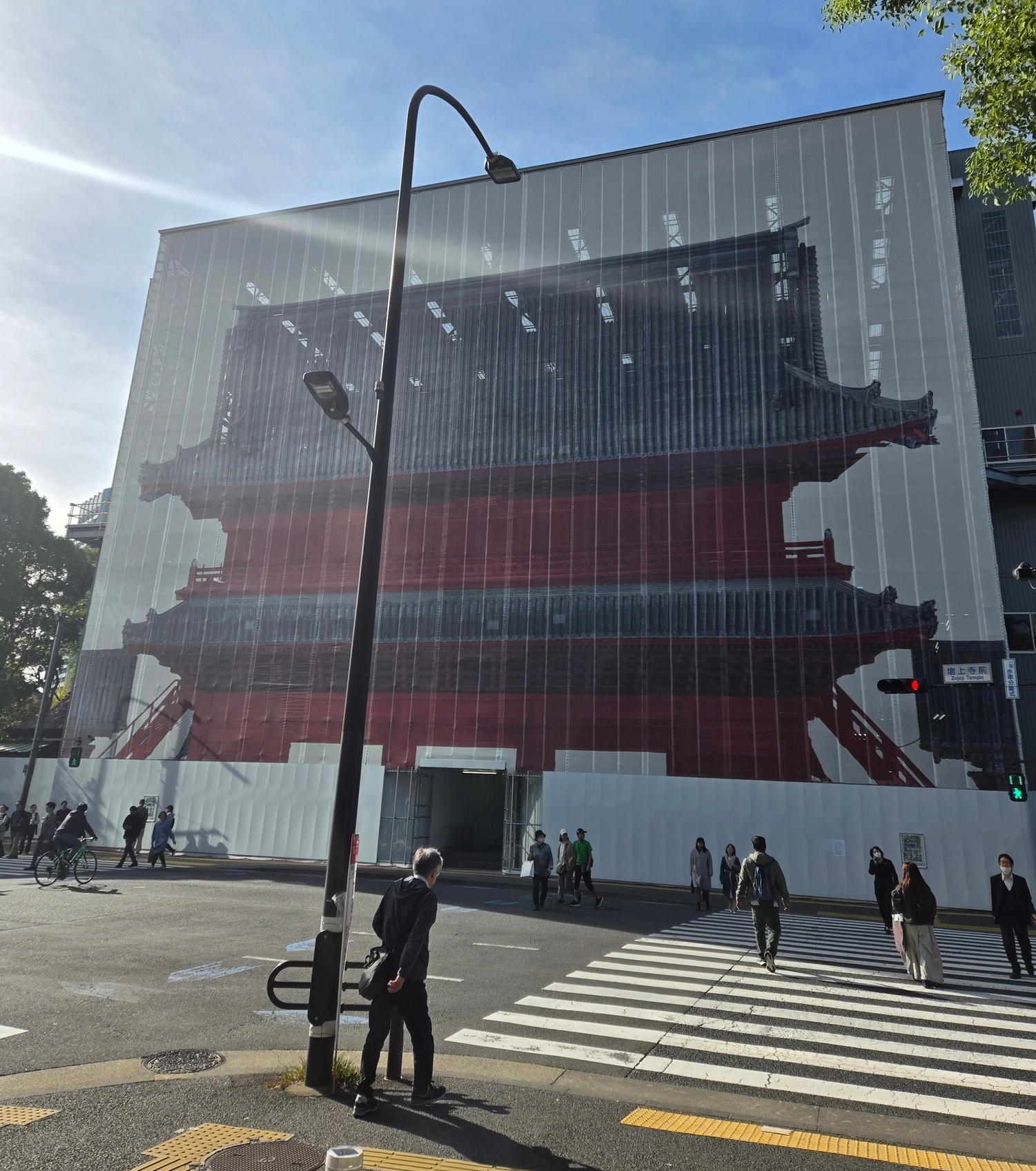
But once you’re in, the site is massive!
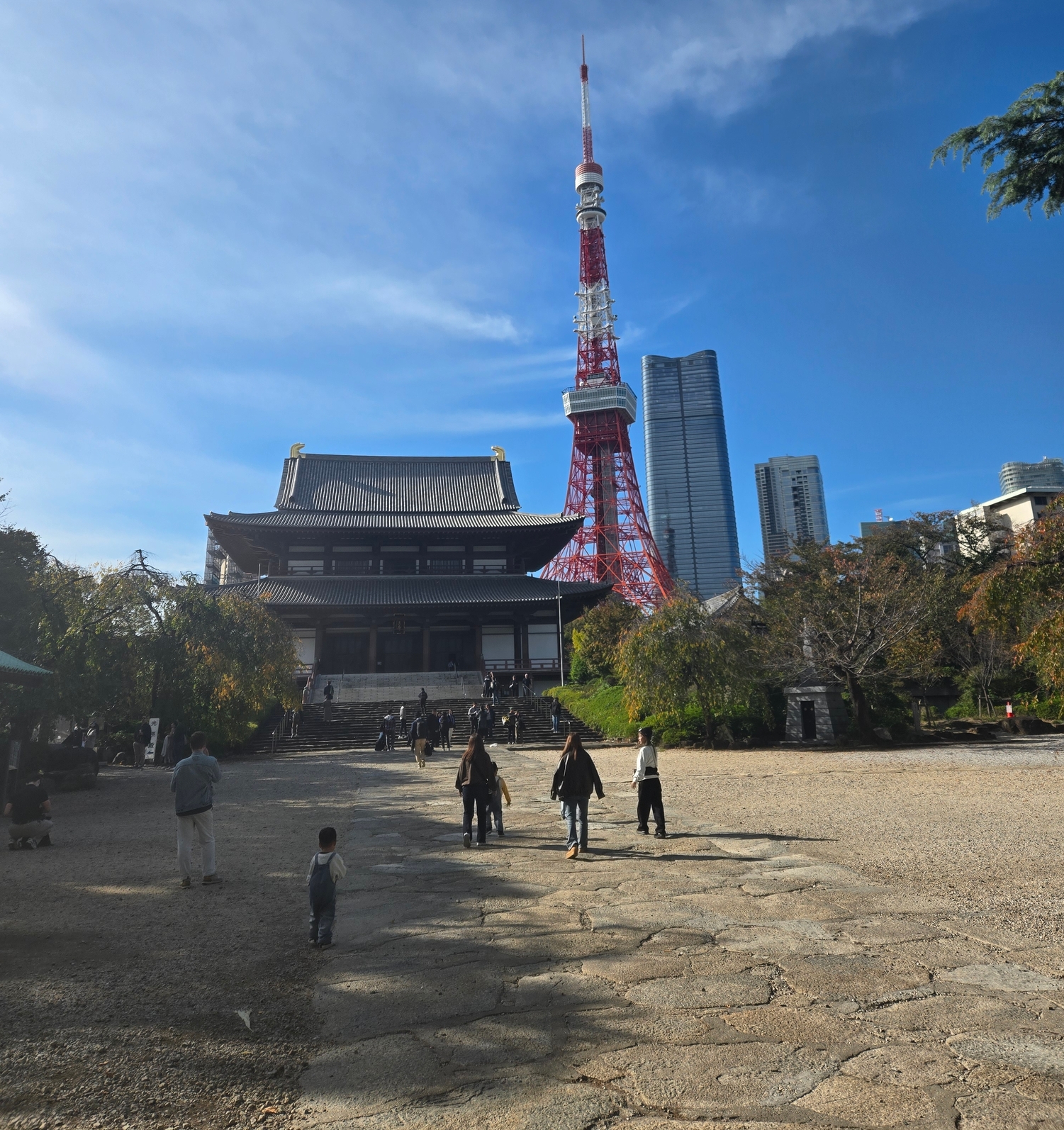
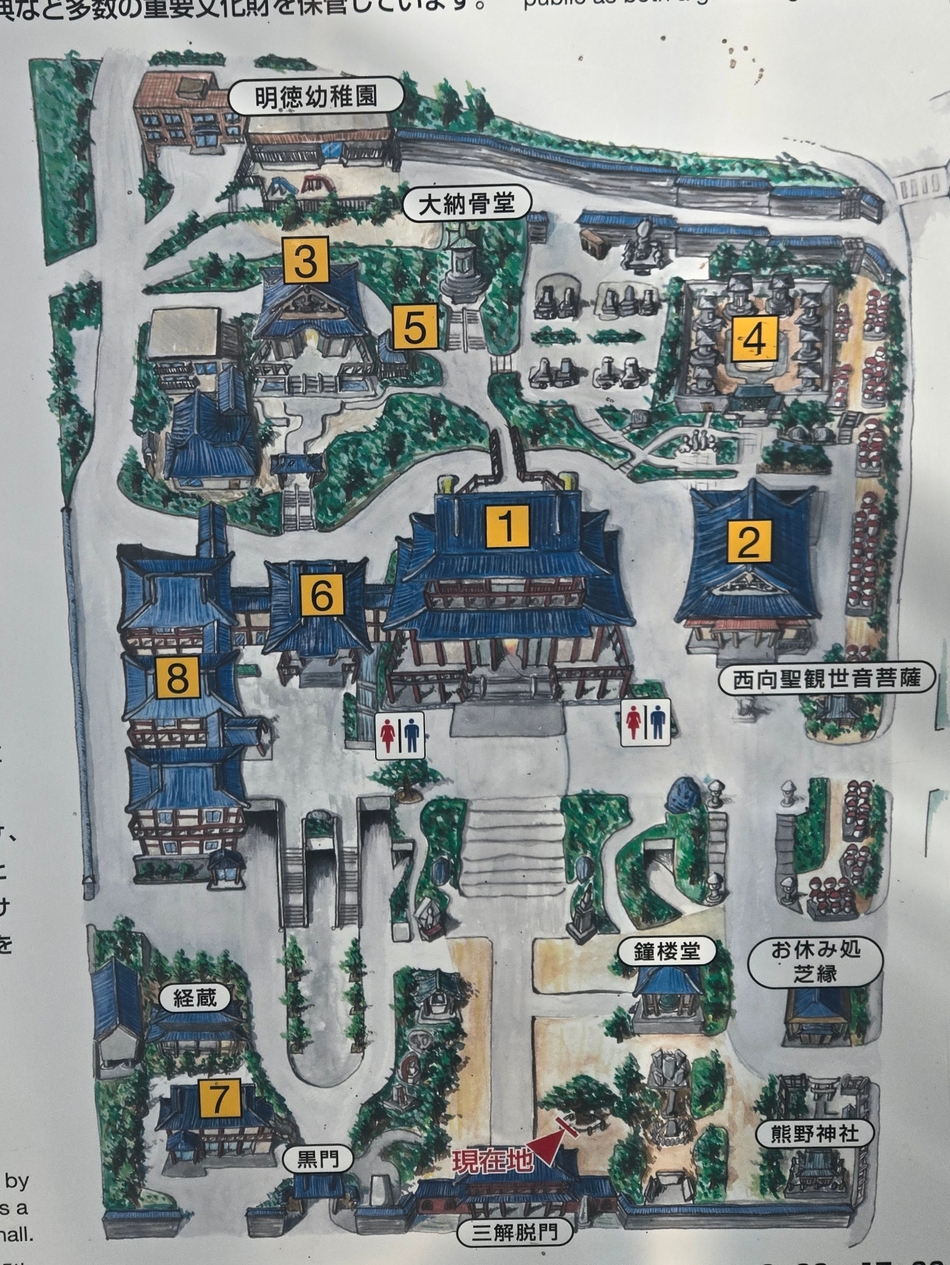
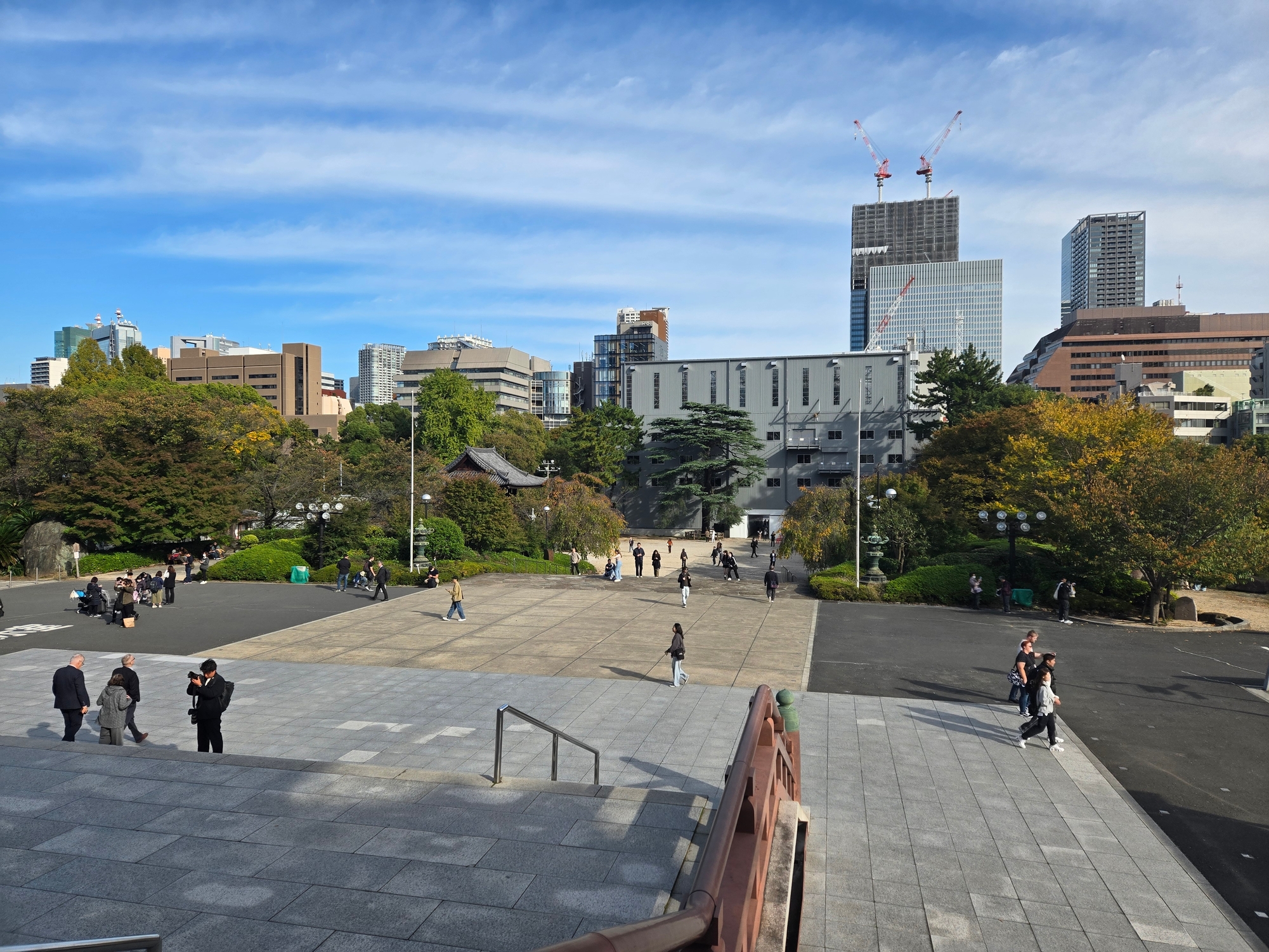
And this is just the main entrance - the foyer to the temple grounds!
I love sites like this, because it shows a huge contrast to the rest of the metropolitan area in terms of space and verticality. You can breathe here, there’s so much open space!

This temple site has multiple areas to it - in no particular order:
There’s a section dedicated to the blessing of children and protecting unborn children. 400 figures are set to watch over and worship children, and are given some garments as protection against the weather.
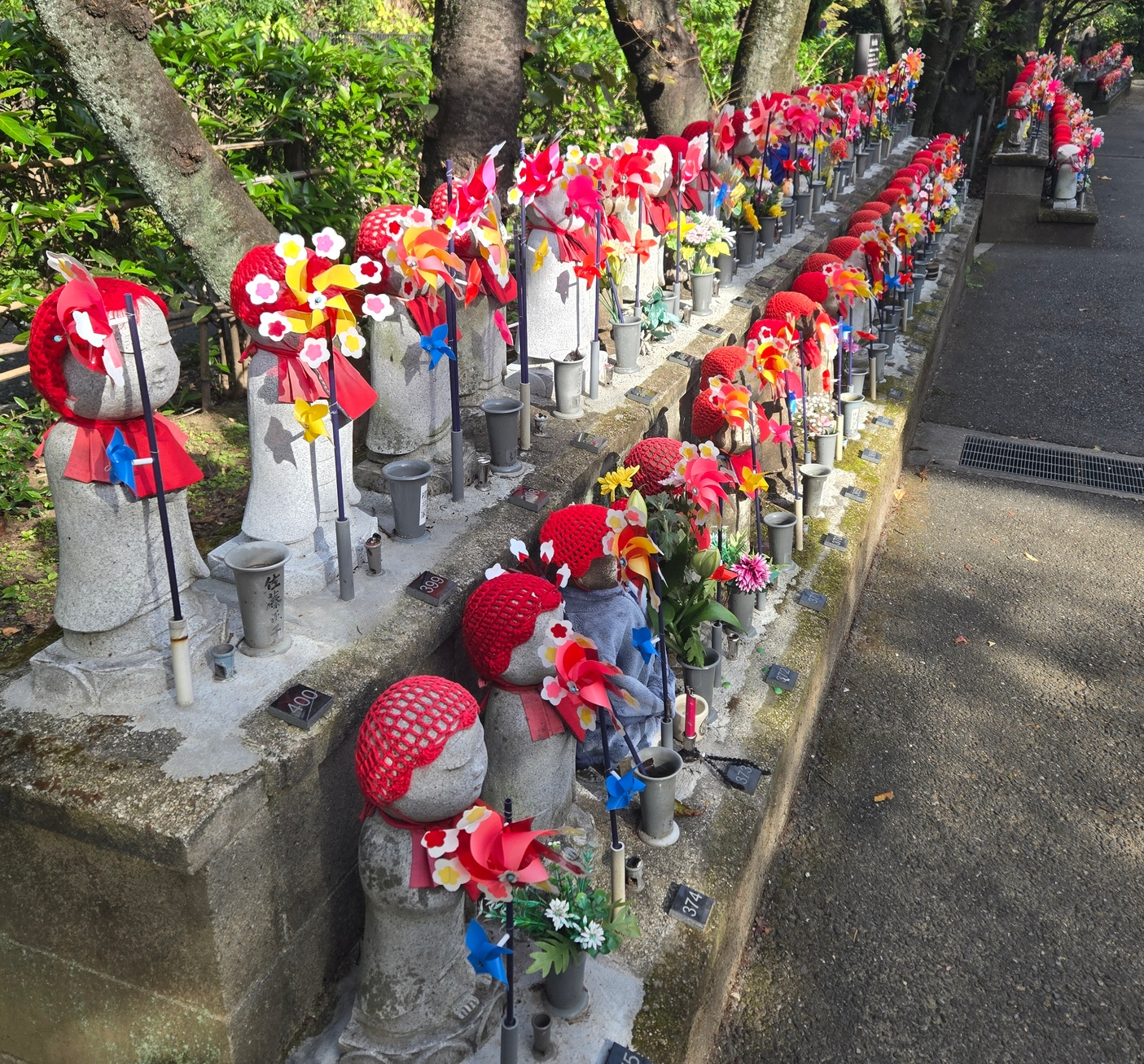
These four figures represent the deities enshrined in Zojo-ji Temple:
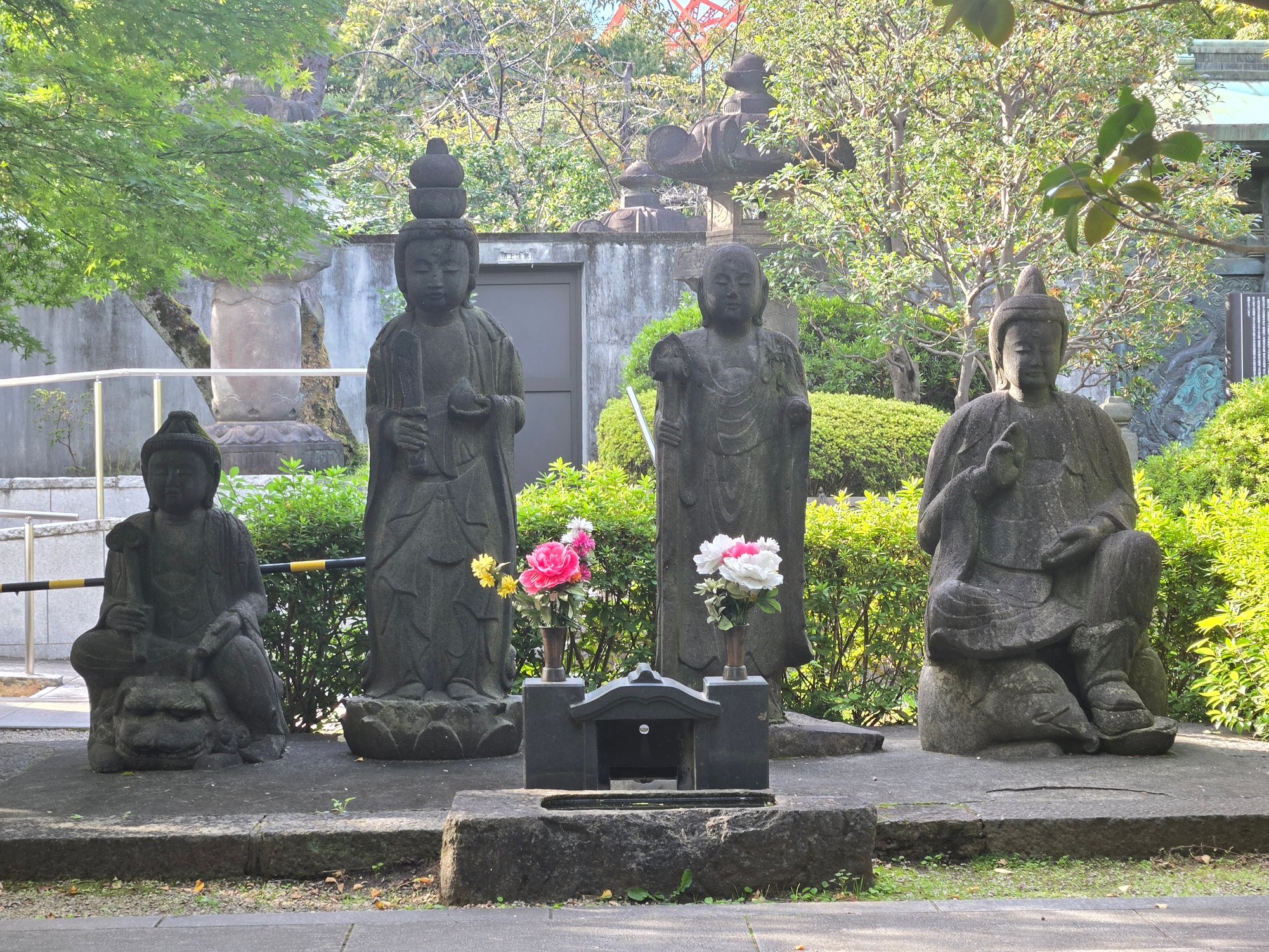
They have a great view to the Tokyo Tower as well:
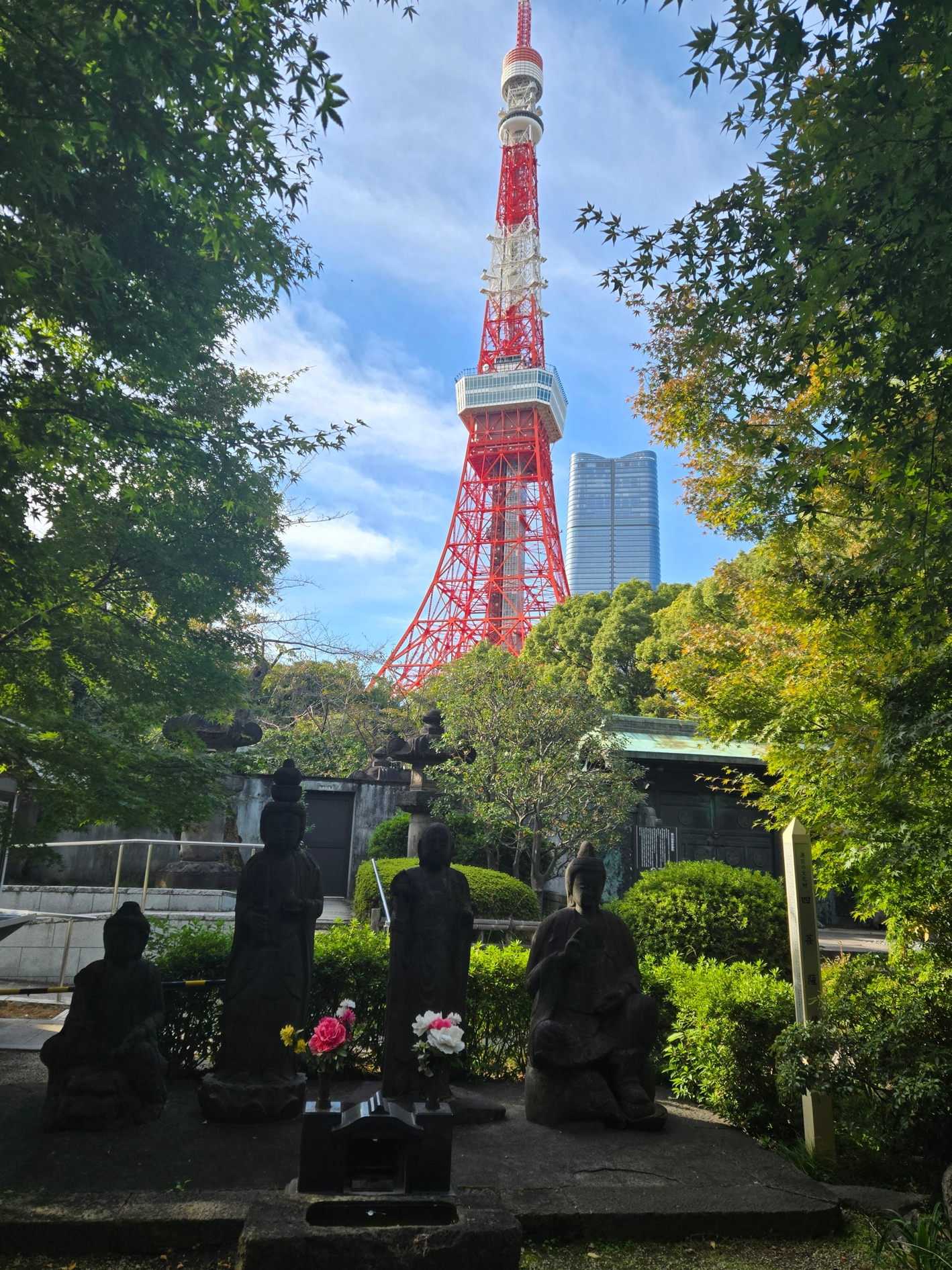
The main temple is so full of incense that the strong scent gives the ability for godrays to form through the glass-and-metal lattice walls:
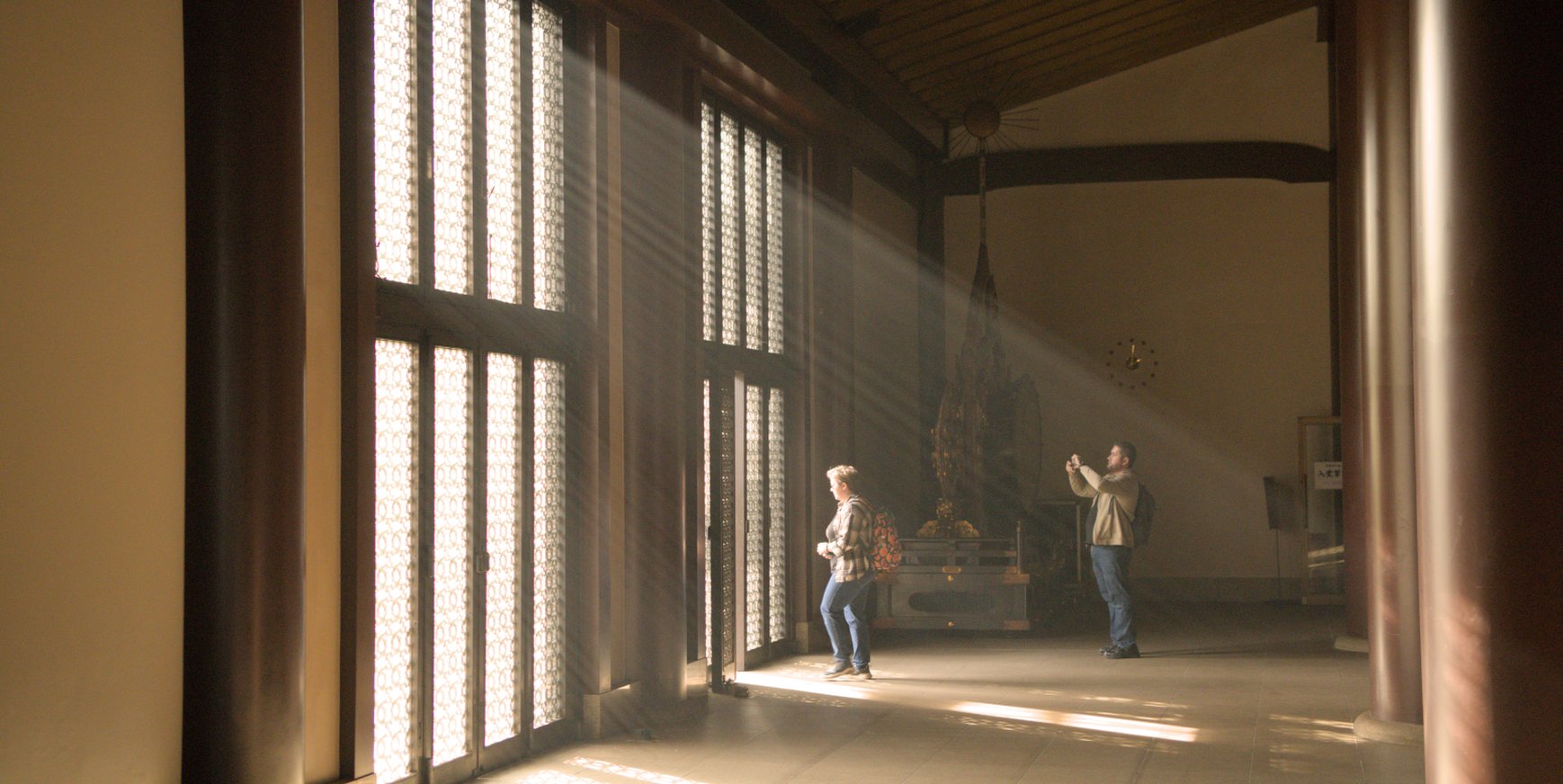
There are additional areas as well - the temple bell, the Tokugawa family graveyard (which we do not have permission to enter), and more of Shiba Park connected to the temple grounds. It’s a big place, it’s really nice and well worth a visit.
After exploring the temple grounds for a couple of hours, getting my goshuin (and some souvenirs such as a lucky cat figurine), I went back to my hotel to rest and recharge in time for dinner.
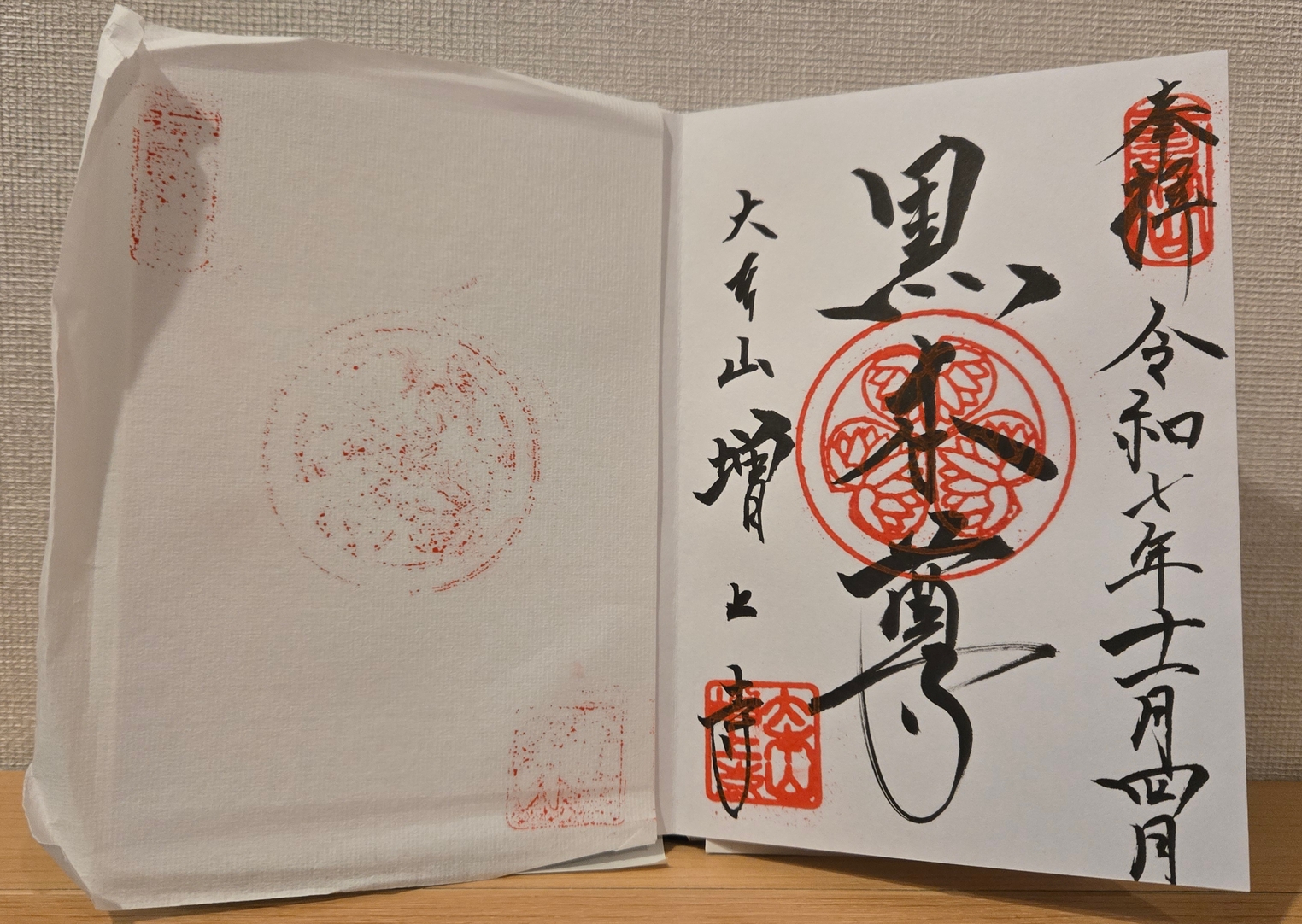
Chicago-style Deep Dish Pizza
I haven’t seen this in Australia, but seen a heap about it online. So when I realised that my hotel was right near a place that does this specific style of pizza, of course I planned a visit!
$36AUD for enough deep-dish pizza to feed 2 regular-sized people plus a drink. Expensive for a solo dinner, but it was nice nonetheless.
Unfortunately, I don’t think deep dish pizza photographs very well - or maybe it’s a skill issue? Either way, just imagine: a bread bowl made of pizza dough, full of pizza components. That’s Chicago-style deep dish pizza.
I got the deluxe “meatzza” - just a meatlovers pizza ingredients in a bread bowl. Awesome stuff.
Not sure it’s worth the hype, but it was yummy pizza all the same.
…and all of that was just in one day!
A Quick Bit of Pokemon Shopping
Today had one thing on the agenda: hang out with grandma at the Tokyo Tower. But that was at 4pm. I had time to kill!
So, I went to Tokyo Central and visited the Pokemon Center Tokyo DX store. My shopping basket filled almost immediately as I entered the store.
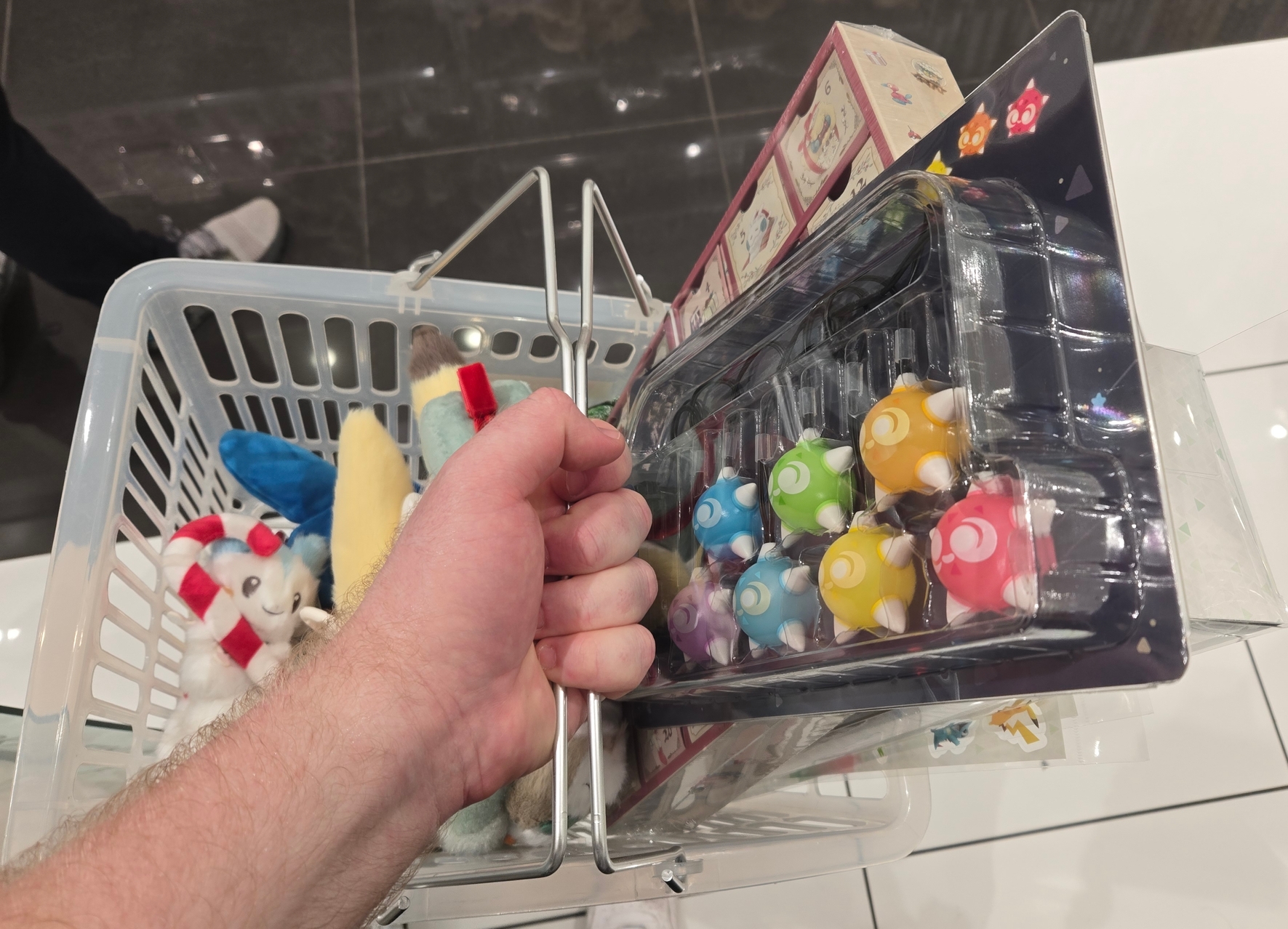
I mean, they put all the latest and greatest Christmas decor in the first 3 metres of the store - it was gonna fill up a basket real quick!
$545AUD later, I ended up with an awesome haul. There’s even a zoetrope! A Pokemon zoetrope!
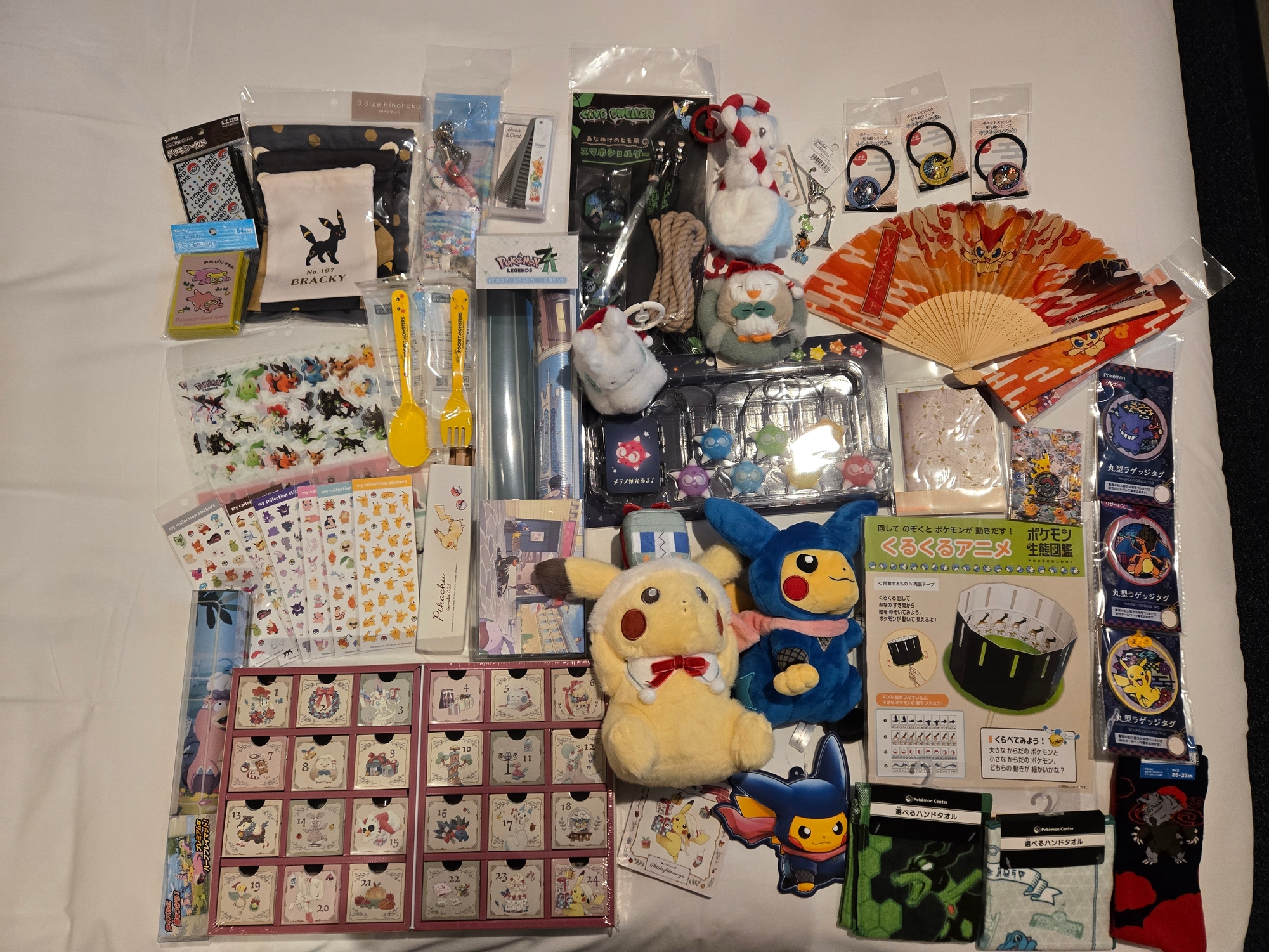
My first attempt at uni was in gamedev majoring in 3D animation. Animation has a special spot in my heart. A zoetrope!!!
Tokyo Tower
Later in the day, I walked over to Tokyo Tower and met up with my grandma. She was only here for a week, and we had a few days planned to spend together. So I figured we’d hit the real touristy spots like Tokyo Tower!
Going up the tower, we could see Zojo-ji Temple from above. Was kinda cool:
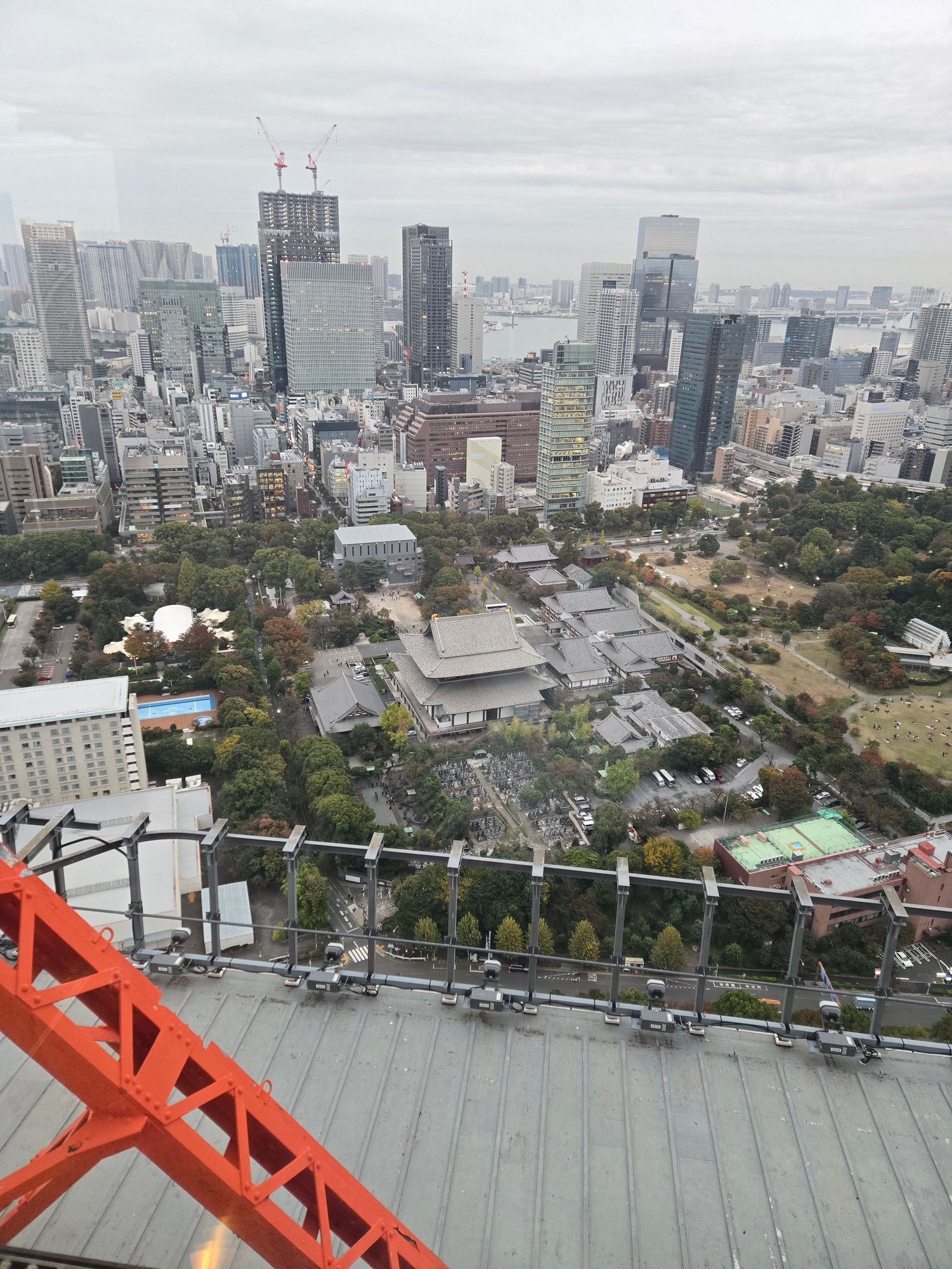
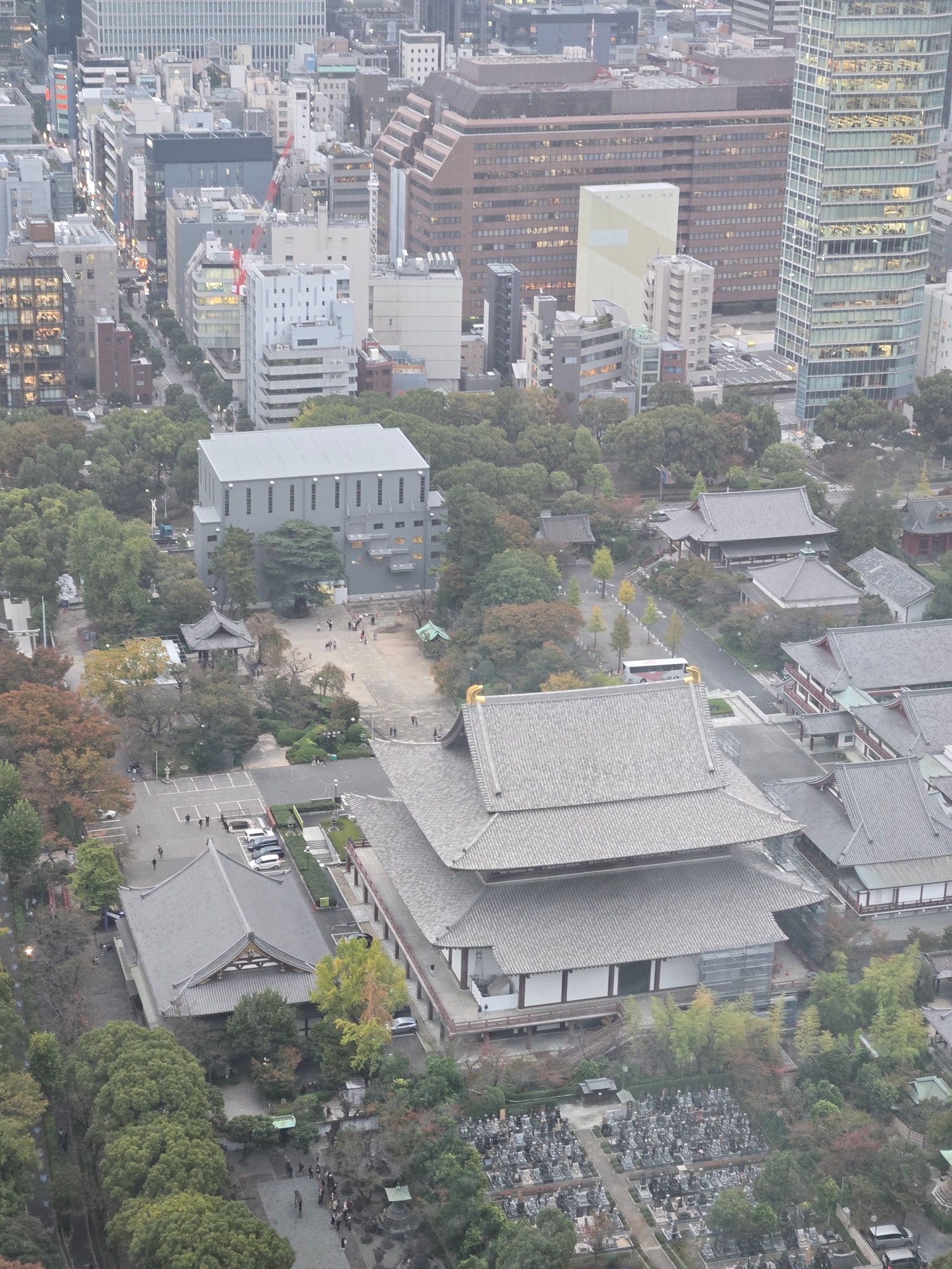
As we get to the top of the tower, we can start to really see the scale of the Tokyo metropolitan area. It goes on as far as the eye can see, unless you’re looking out over the water!
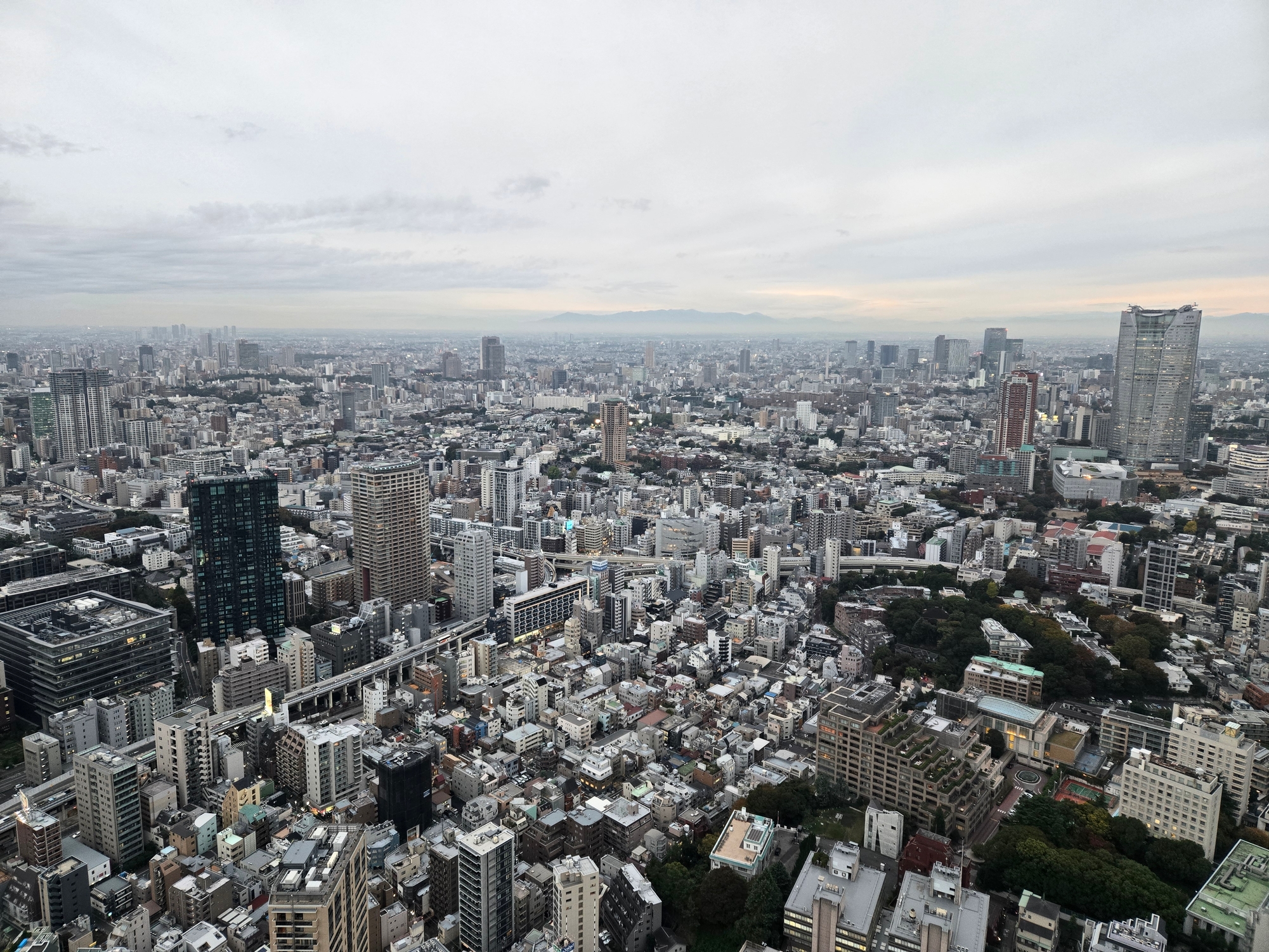
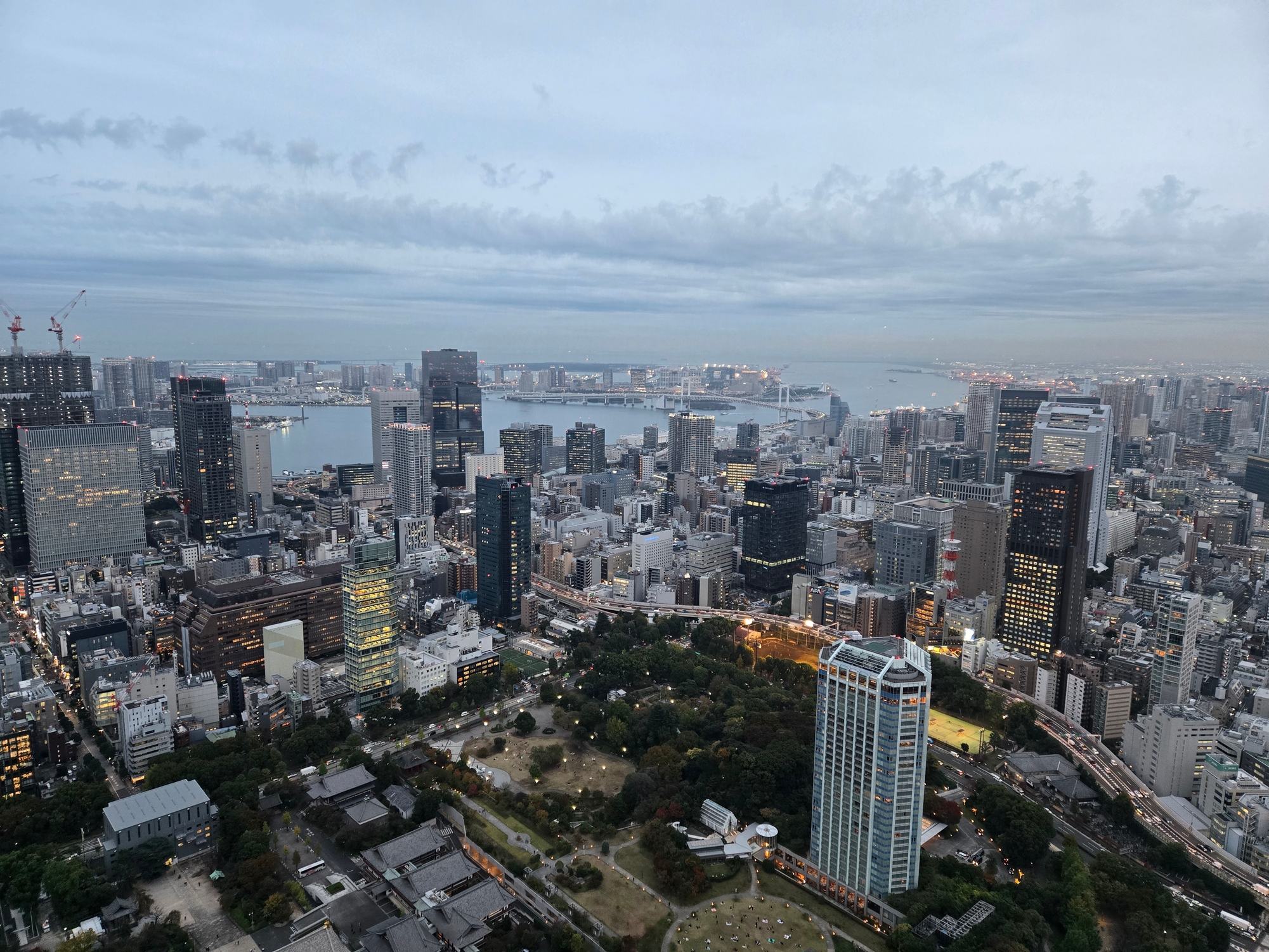
We also got to see sunset from Tokyo Tower, but it was kinda cloudy - nothing of note was visible. Still, we got some good shots of the city after the sun set, lots of photos like this looking across the various areas of Tokyo:
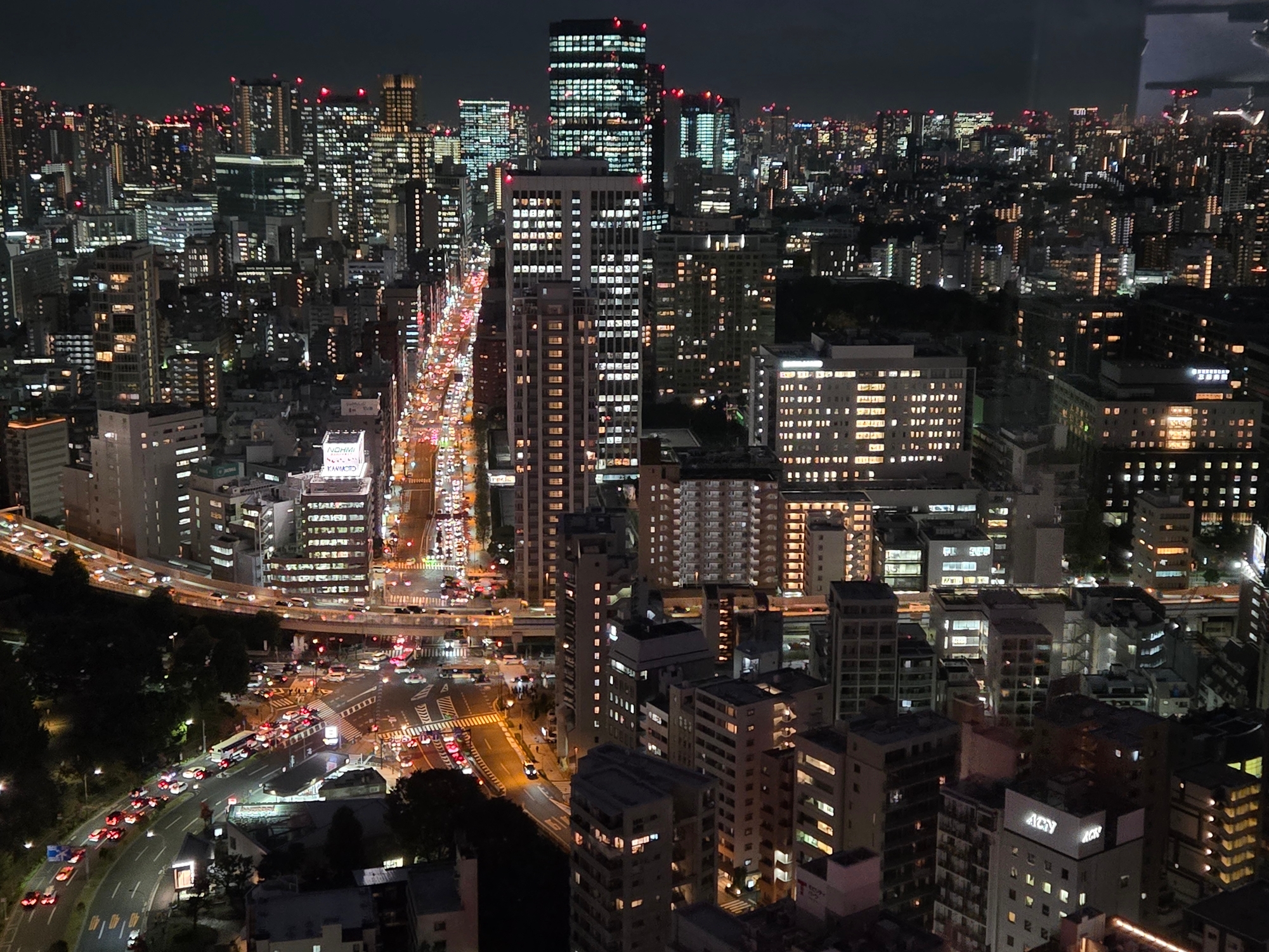
Grandma and I got our nice lil commemorative photo from the tower, and split away for the night. As I was walking back to my hotel, I saw some tourists get a cool photo of Tokyo Tower from the street and figured it was a great idea - after all, a recently-released Pokemon Legends: Z-A’s story mode makes this a nifty and ominous sight to see:
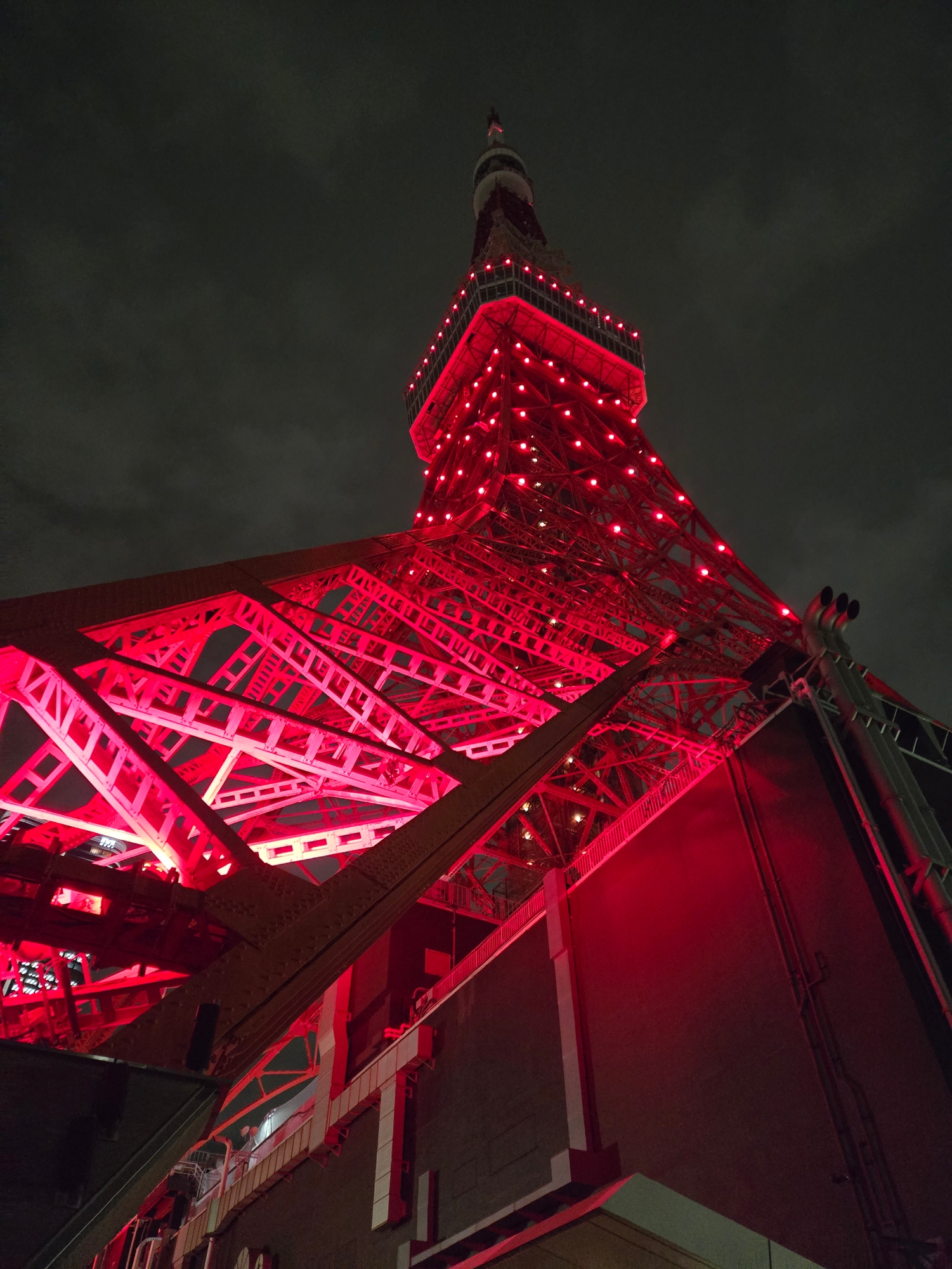
And that’s day 2!
The Next Part
I’m sitting here on Sunday night, at the end of week 1, realising that it’s hard to write while doing busy days of touristy things and harder to write about all of those days in a single post at the end of the week. I don’t want these posts to be novels of their own - so you can read about more of week 1 in another post, coming soon! Luckily tomorrow is a “rest/laundry day” in my itinerary - I’ll probably write while waiting for laundry!
The next post will cover touristy things at Tokyo Skytree, the Pokemon Cafe, and probably Senso-ji Temple and Asakusa.